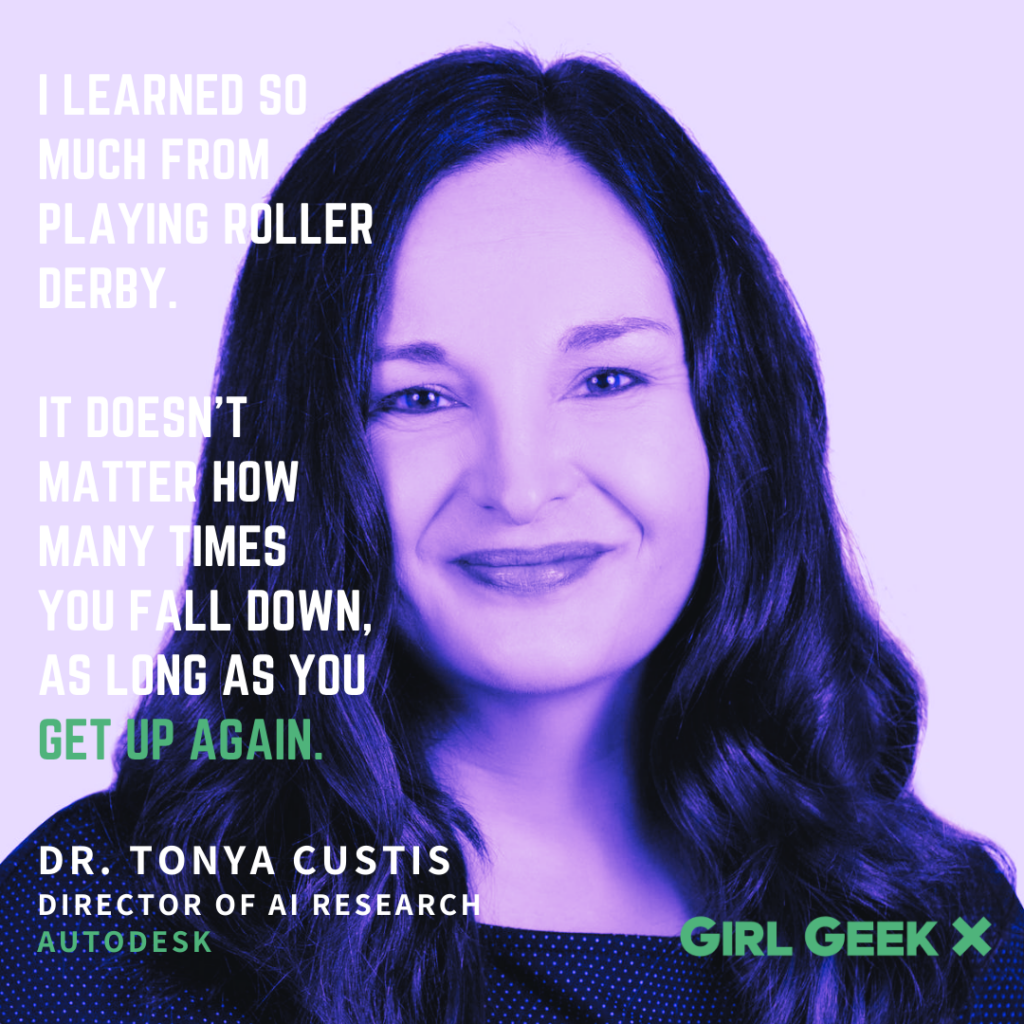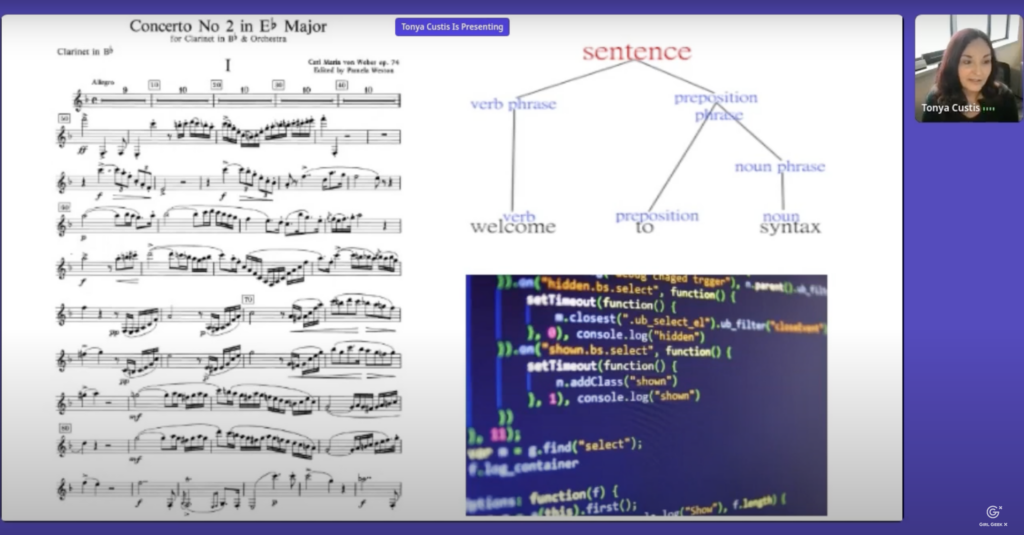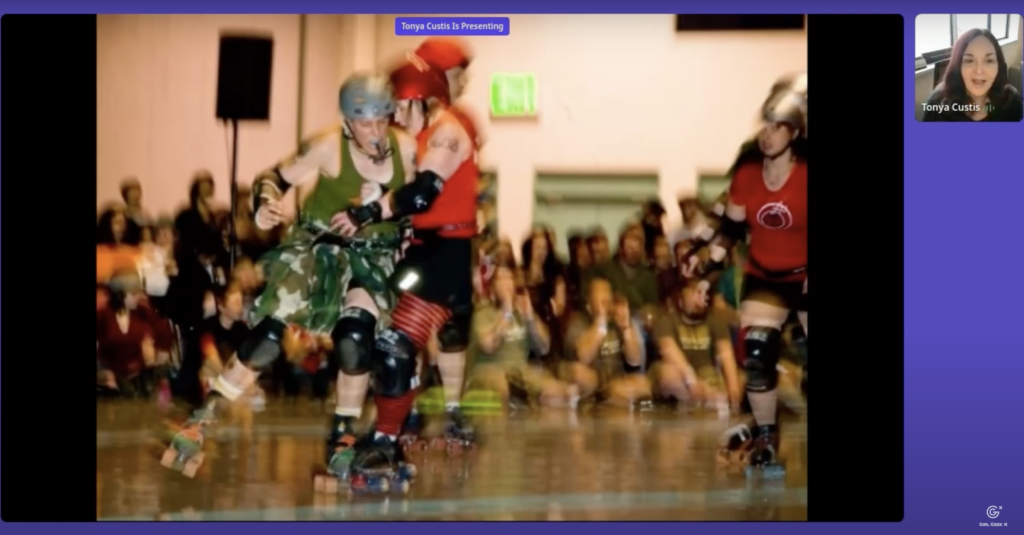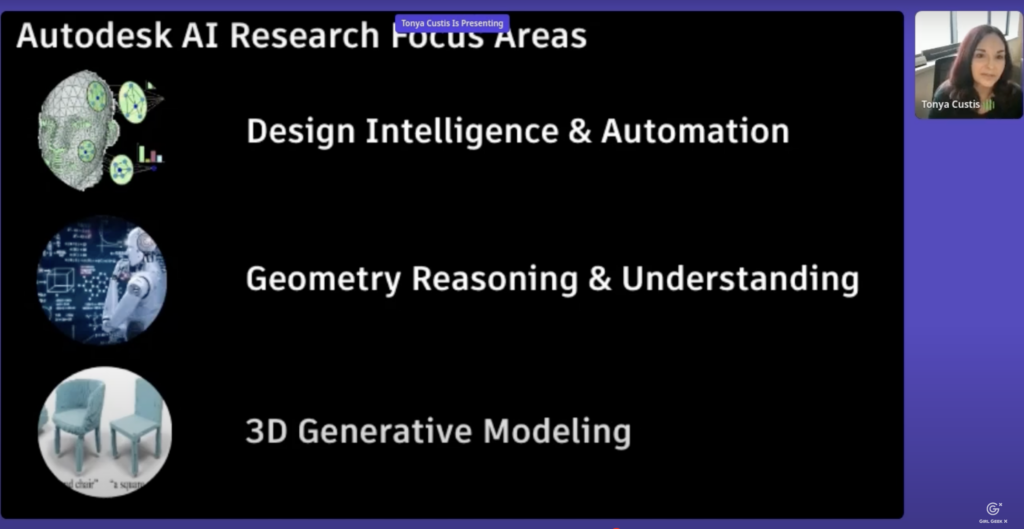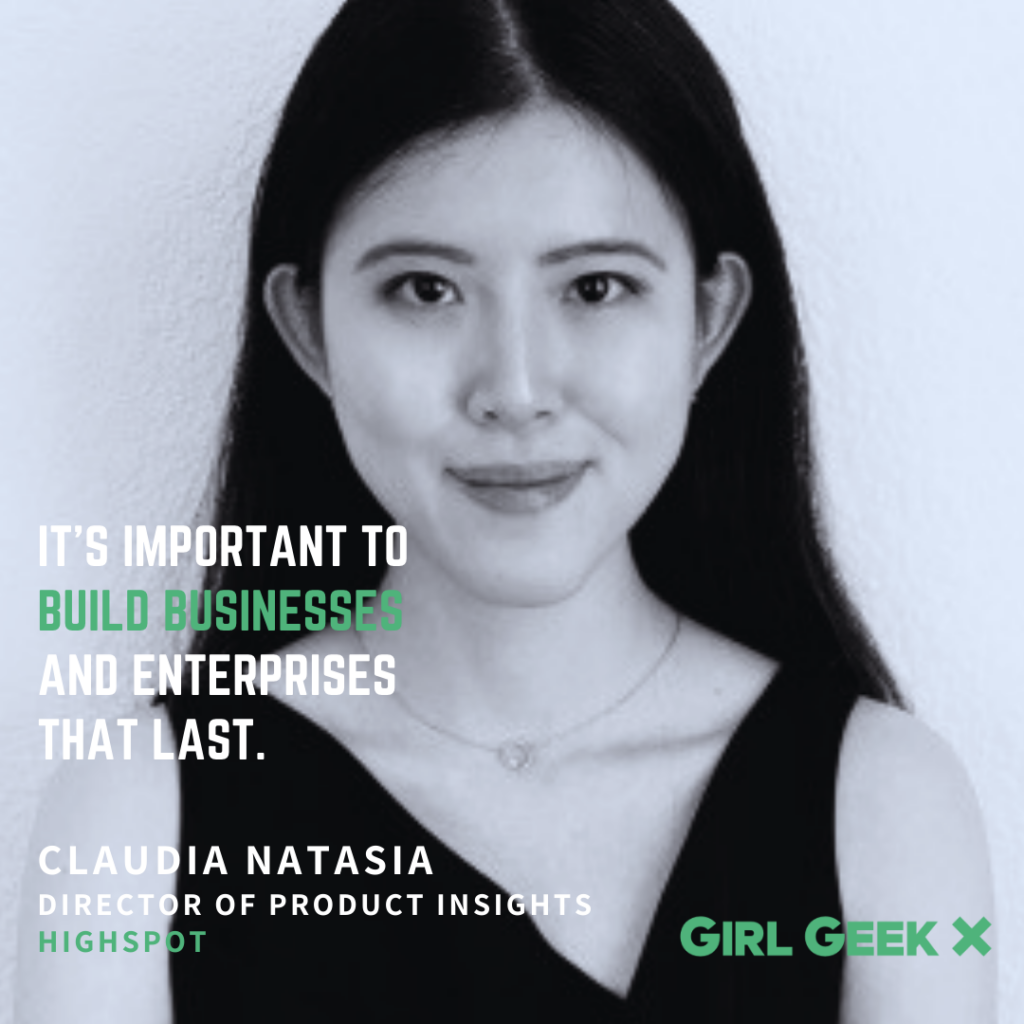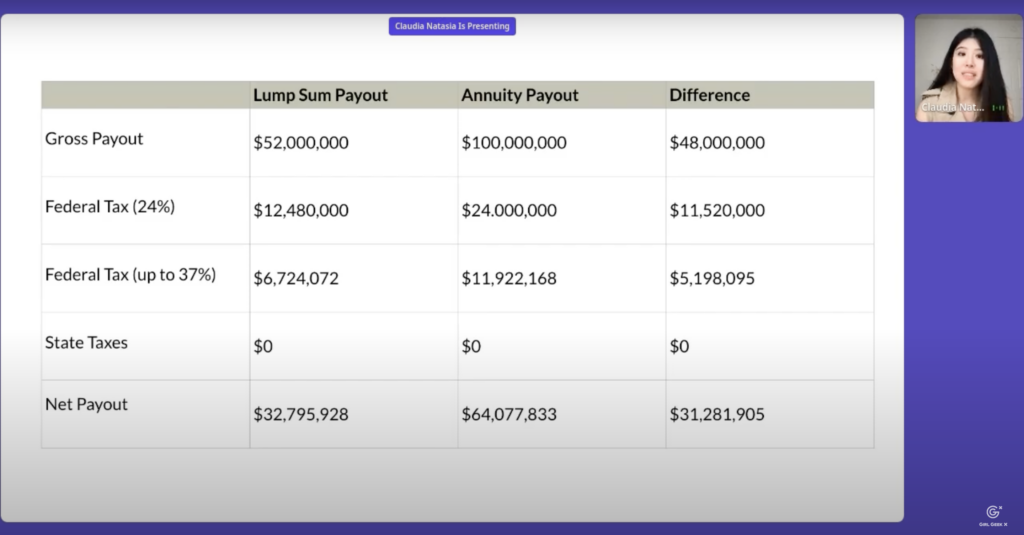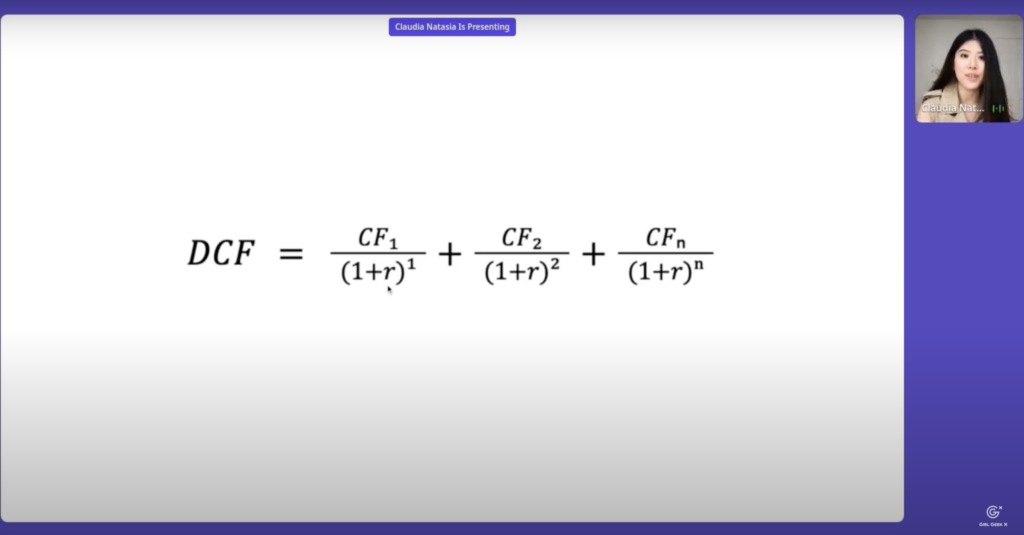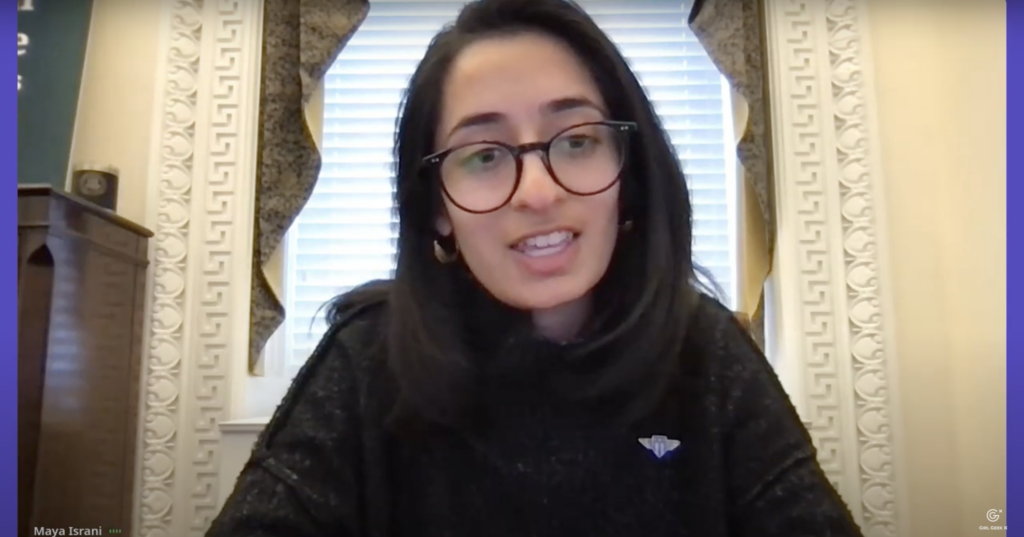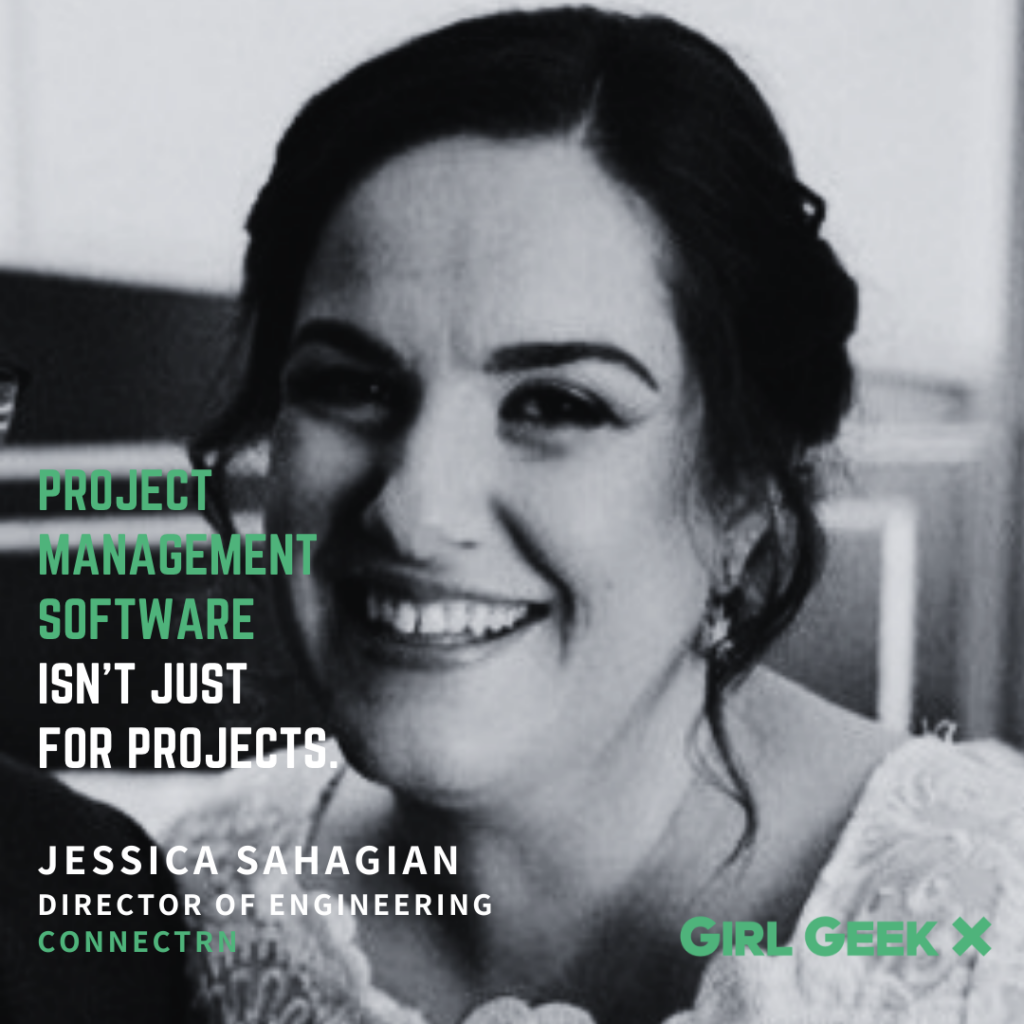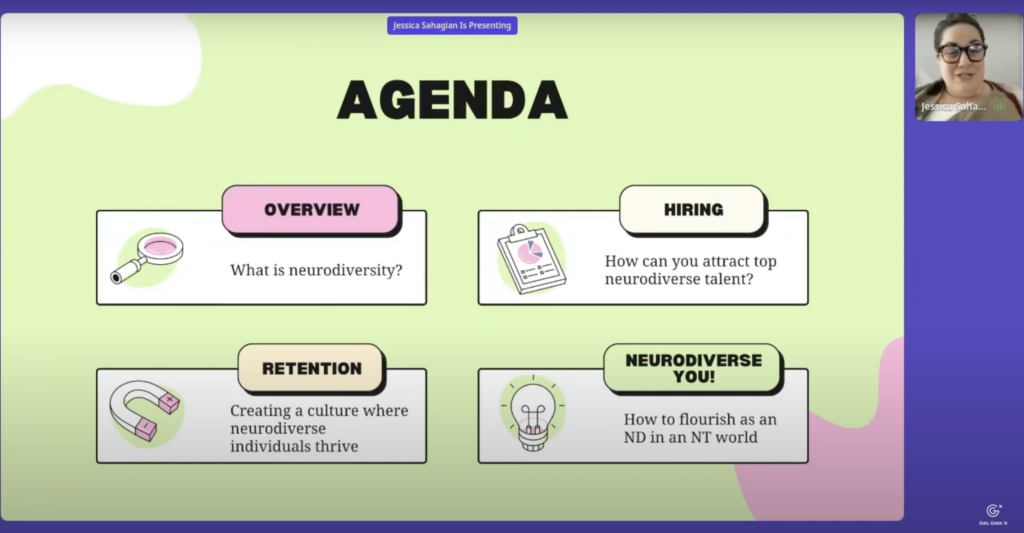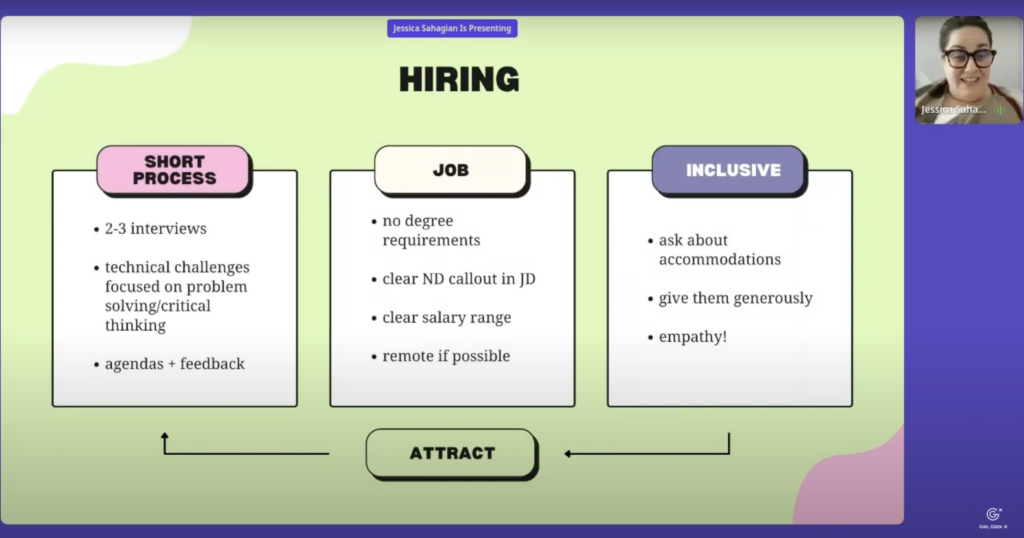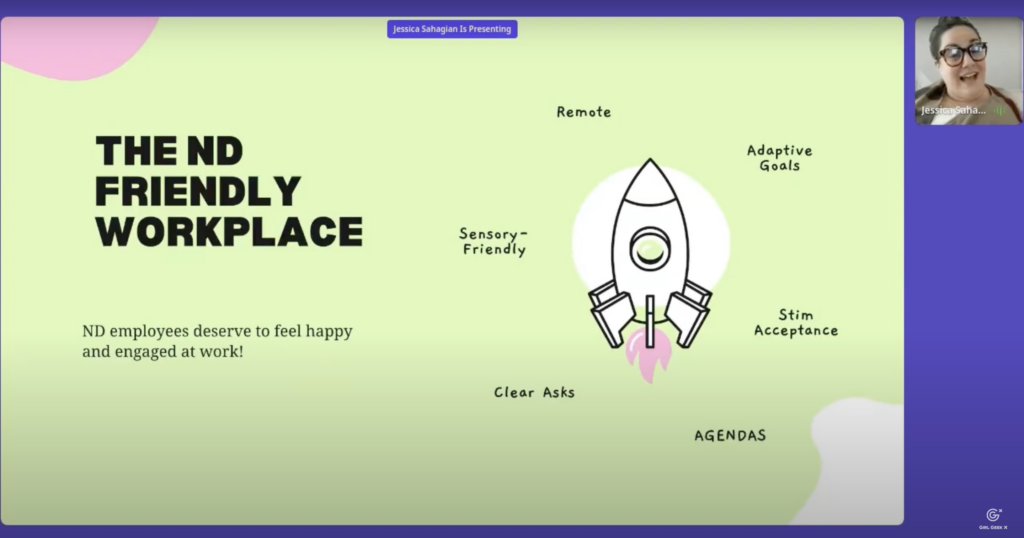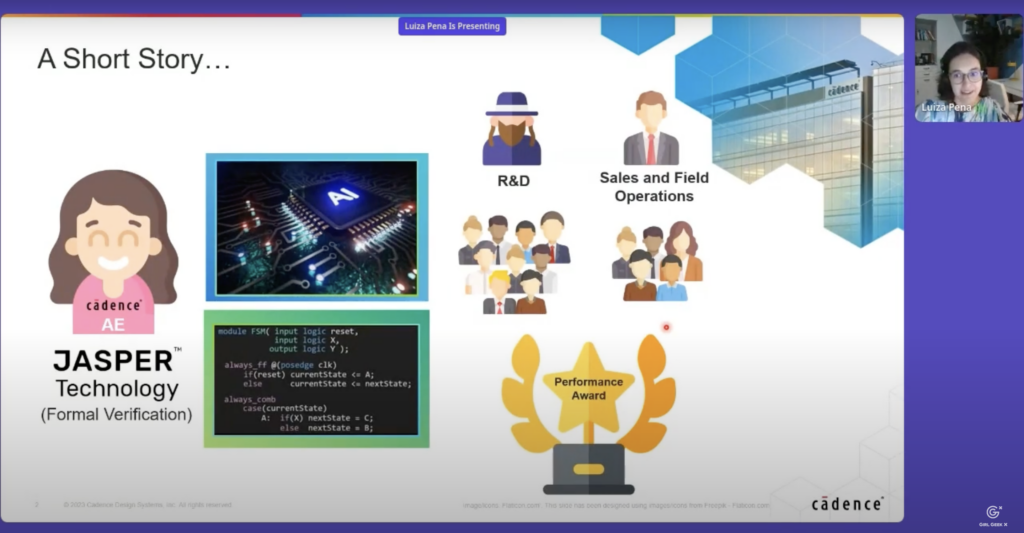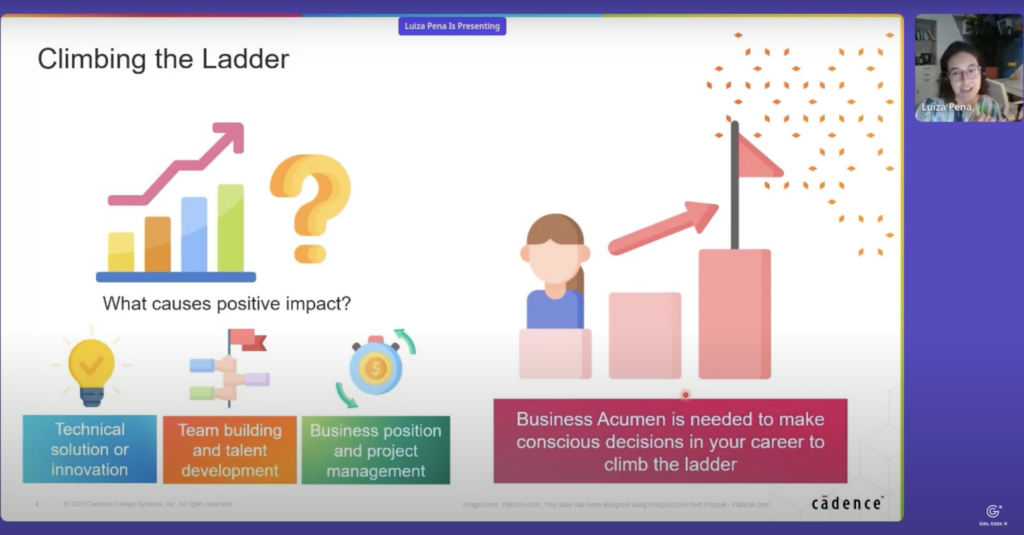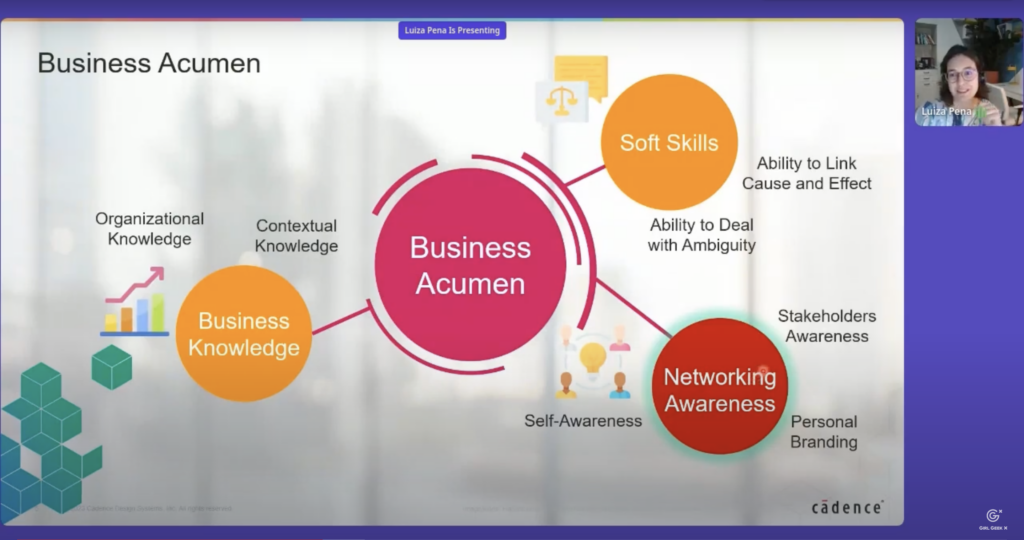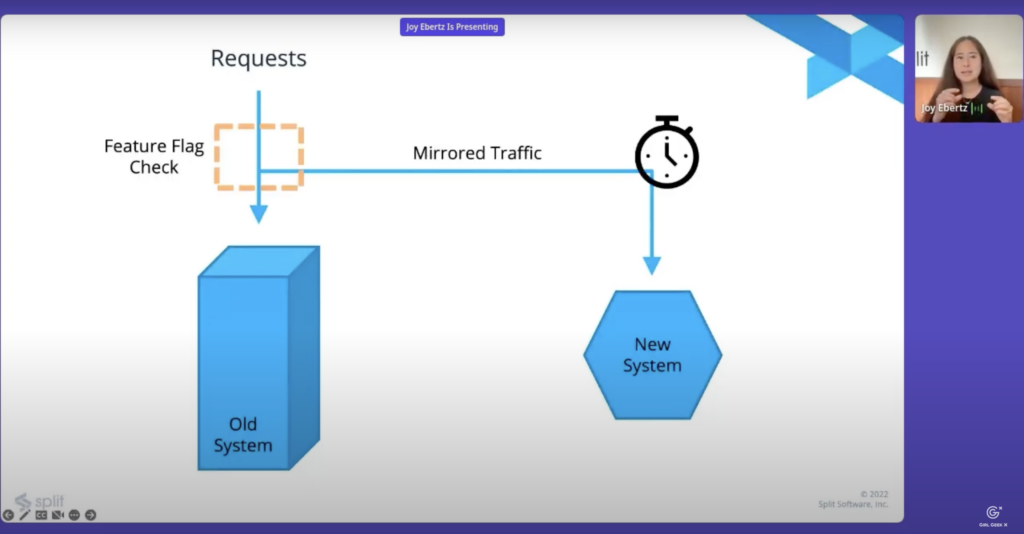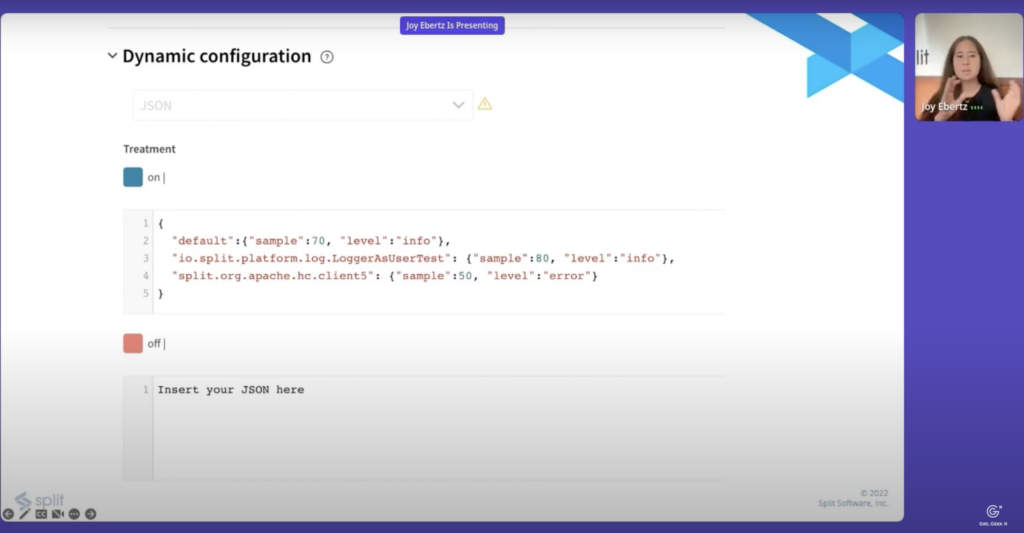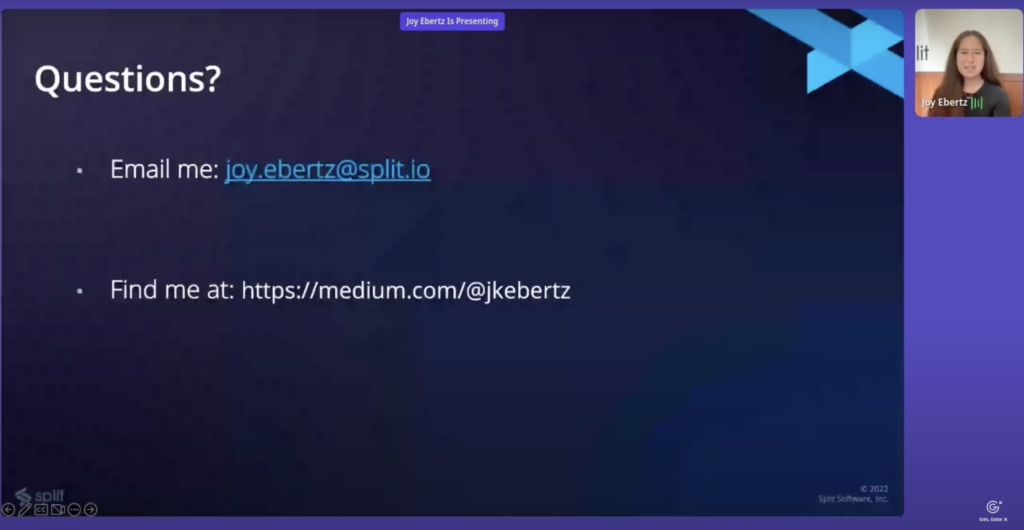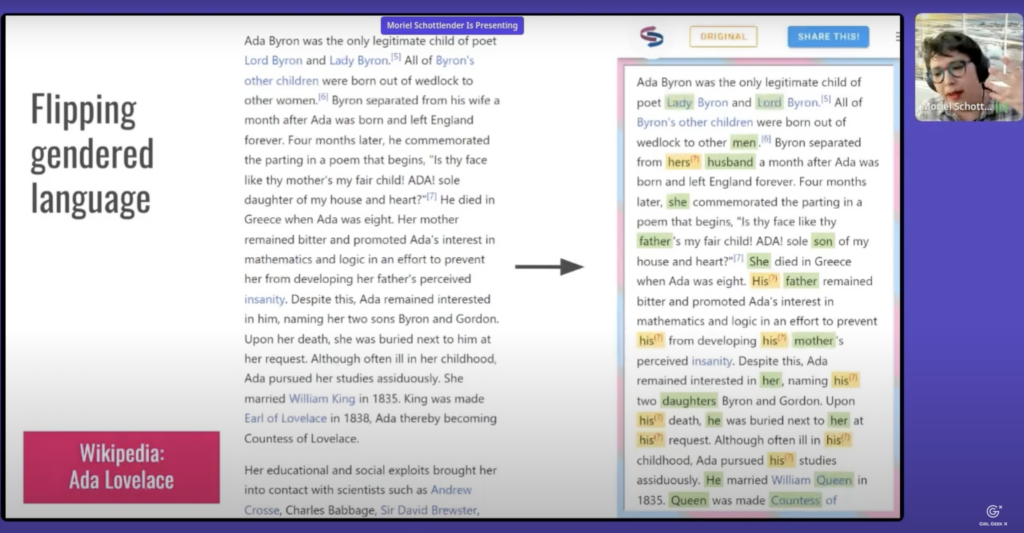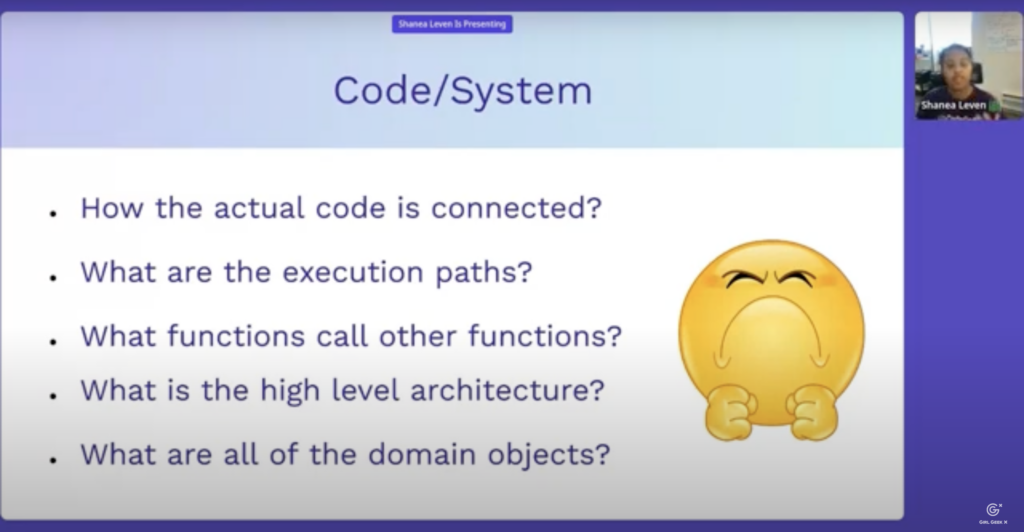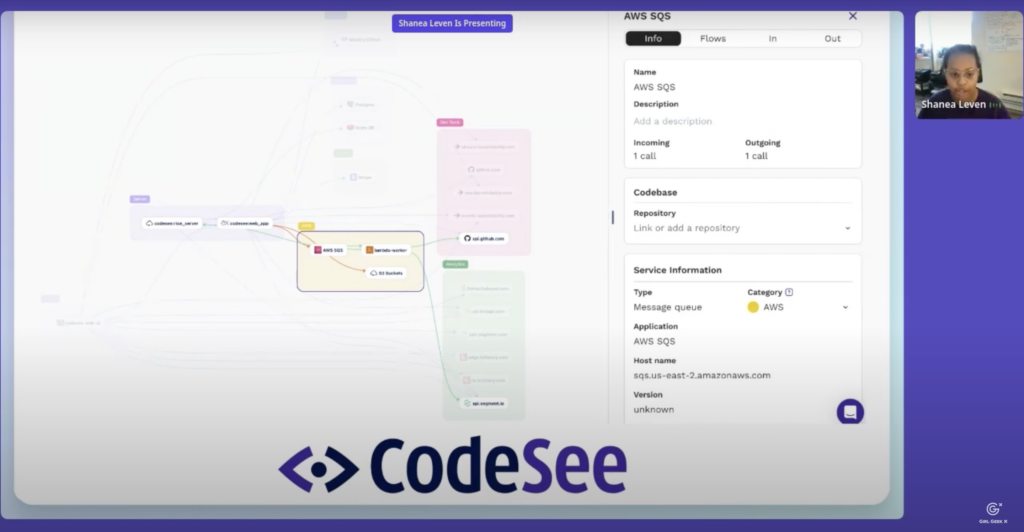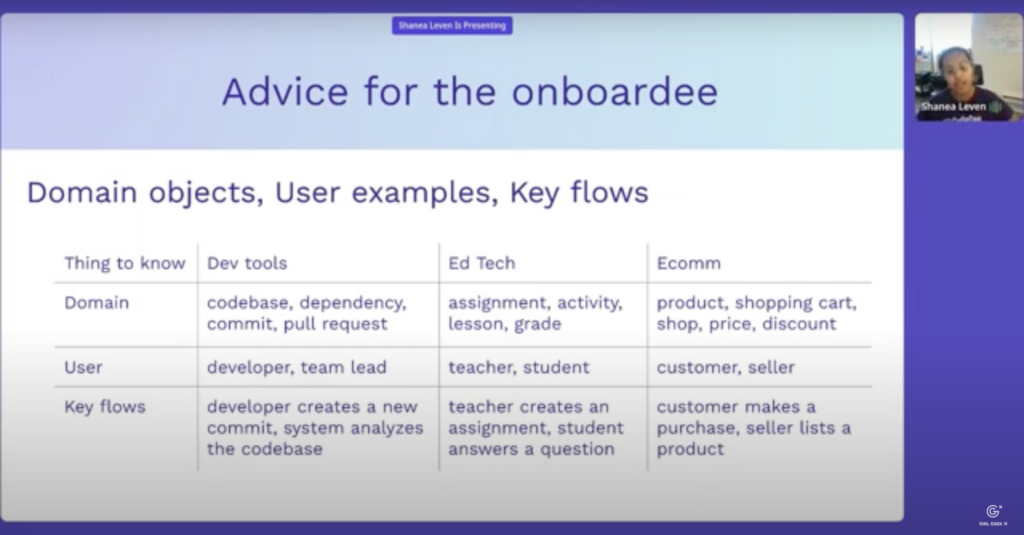Like what you see here? Our mission-aligned Girl Geek X partners are hiring!
- Check out open jobs at our trusted partner companies.
- Watch all ELEVATE 2023 conference video replays!
- Does your company want to sponsor a Girl Geek Dinner? Talk to us!
Angie Chang: We have with us today Maria Kazandjieva. She is an engineering leader at Graft. She’ll be speaking to us about working at Netflix, where she was for seven years, most recently as an engineering director. And then now she has started a company and taking that big jump, and she’s gonna tell us about making ‘scary’ career choices. Welcome, Maria.
Maria Kazandjieva: Thanks, Angie. And hi everyone. Good morning from what appears to be a rainy and gloomy California in Bay Area. Isn’t that the story for the last two months? I am really thrilled to be spending International Women’s Day with people, even though we’re all virtual. I love seeing your smiles. Just kidding. I love imagining that you’re all in pajamas like me. But hopefully in the future we get to see each other in person. As Angie said, I used to be engineering leader at Netflix, and about two years ago I did a career switch and I co-founded a startup with a few friends of mine as well as a few new friends of mine. And I thought it was a really good topic to talk through because I think no matter what career choice you make, it can feel stressful and and scary at the time of the decision.
Maria Kazandjieva: When you look at LinkedIn, you see the choices that people have made through their career, but you don’t really get a glimpse into what was going through their head. And so my goal today is to tell you honestly and genuinely the types of things that I was thinking about and perhaps tell you not to do some of those things. I hope that by the end of this talk, instead of feeling like this scared cat in the middle of the slide, you’re going to feel more like either me smiling or Foosball, and I highly recommend feeling like Foosball because he is always full of energy and always happy.
Maria Kazandjieva: Let’s get started. Two years ago, I was living the dream at Netflix, a company that people recognize, a product that people love, a company that always supported me. And it was an amazing place to work at. And it felt like this beautiful trail that I was on this, this career path that I was on. This is a trail in the Bay Area that I really love. But there came a day and it literally, it was about two years ago, it was in February, two years ago, that there was a fork in the road, right? A friend of mine from graduate school approached me, had been thinking about doing a startup, and he wanted me to join him in that adventure. And I had to think about it. This was an opportunity that I was not actively looking for at the moment, but I was like, man, I really gotta think about this one. By the way, if you see a robot next to a picture, it means it was generated via AI. So all complaints about those images should go back to you know, Dall-E.
Maria Kazandjieva: I think in this case now, I did a career choice that many people at the time called brave, scary, risky, because it was going from a kind of stable, well-understood job to something completely new. But honestly, I think anytime you come to a fork in the road, or a fork in the trail, it can feel scary. It doesn’t have to be going to startup. It doesn’t even have to be going to a new company. It can just be a role change within your own company, like going from being an engineer to being a manager, or going to a different team at your same company. And the reason it can feel scary and stressful, at least for me, is because there’s a known thing, that you currently have, and then something unknown, something new that just feels like it’s nebulous and and you don’t know how to evaluate and, and, and what’s gonna happen with it.
Maria Kazandjieva: I think that’s just the nature of humans to be a little bit scared of the unknown, right? And so what I wanna tell you, really, if you get out, one thing from this talk is there are many beautiful trails out there. And so the fork in the road can feel scary, but in fact, sometimes when you take a new path and you’re not sure where exactly it’s going to lead, you can end up somewhere else, somewhere that’s different, but equally beautiful and equally fun and true story. This picture on the screen is in fact a trail that I had seen many times, and I just didn’t know how steep it was, and I didn’t wanna run it. I had ignored it for, for many, many runs. And one day I was like, you know what? I’m gonna try it. And I was rewarded with something amazing and just, just as beautiful as the previous trail, but, but different and new and exciting.
Maria Kazandjieva: And so I hope if you’re considering a career change, and if you feel like it’s a stressful thing, yes it is, but I know we can do it. Before we get going, I’m gonna give you a 60 seconds linguistic lesson, and you can ignore it, or you can go ahead and look this up on Wikipedia afterwards. But I find this concept fascinating. It’s the concept of thought-terminating cliché. It’s essentially things that we say or think that cause our thought to stop, instead of encouraging more thought and analysis and conversation. And so if we have something called a thought provoking question, a thought-terminating cliché would be saying something like, “well, it is what it is, right?” It doesn’t really encourage further thought.
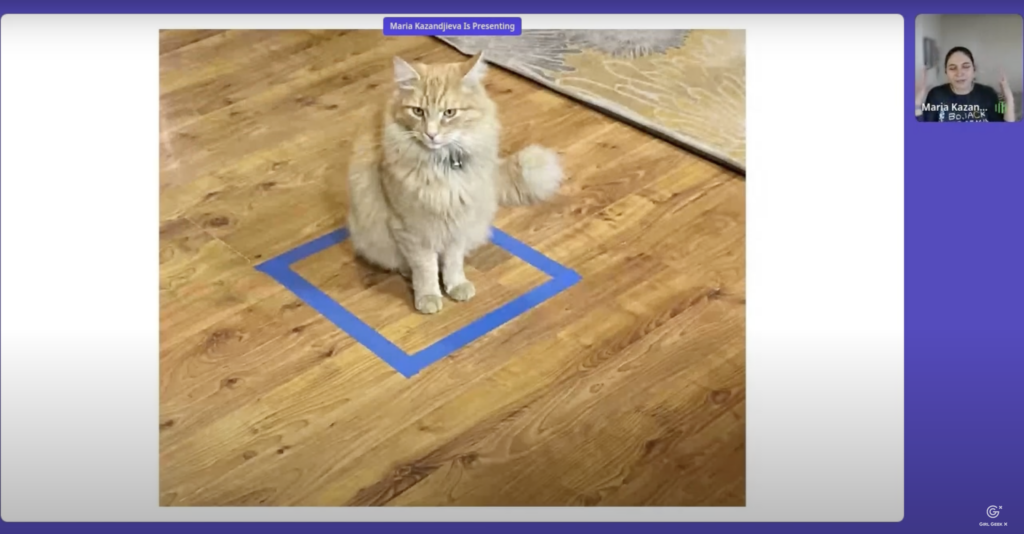
Maria Kazandjieva: One way to think about thought-terminating cliché is to imagine that you’re this cat that is boxed in, and even though there’s no actual box, there’s no actual barrier. The cat is sitting in this square, even though it’s just marked on the floor, the cat can go in any direction, but it has put itself in this imaginary box. Why am I telling you this? When I started considering a career change from Netflix to a startup, I immediately found myself engaging in my own thought process with these thought-terminating cliché and boxing myself in, and I really wanna tell you don’t do that, right? There’s better ways to do it.
Maria Kazandjieva: Let’s talk about the three cliché that I engaged in. Number one, telling myself it’s not the right time. Number two, telling myself it’s risky. Number three, telling myself I can’t do it, what if I fail? These things could be true, but as thoughts, they’re not useful because they do not actually dig deeper into what’s behind them and what’s actually going to drive your decision to make a career choice.
Maria Kazandjieva: Let’s jump into the first one. It’s not the right time. If you’re at a job that you currently like, and I hope that’s the case, and if you’re working with people that you like, it can feel very uncomfortable to think about leaving. And that discomfort is immediately going to manifest itself, like it did for me, as you’re saying, “Well, it’s not the right time” because you don’t wanna leave something good, right? And so the, the thing I would suggest here, and this is what I went through, is process that may be guilty feeling or that discomfort cherish what you have in your current situation, but don’t let it stop you. Don’t let it stop the thought of doing something new just because you love what you’re doing currently. I put some pictures from various team members and, and people that I worked with at Netflix. I loved working at Netflix. I miss Netflix. I miss the people that I work with. They’re fantastic people, I keep up with a lot of them. And I felt like I was going to be betraying my team, that I was going to be betraying my manager, that I was going to be betraying Netflix if I left, because Netflix had been so good to me.
Maria Kazandjieva: But the truth is unless you stay at the exact same job for decades and decades and decades, you are going to have to sit with that uncomfortable feeling of choosing to leave something good, so that you can have a new adventure, and it’s a normal human feeling. It’s a good feeling to have because it means that you liked the thing that you had and you appreciated it, but it doesn’t mean you should not go for a new adventure.
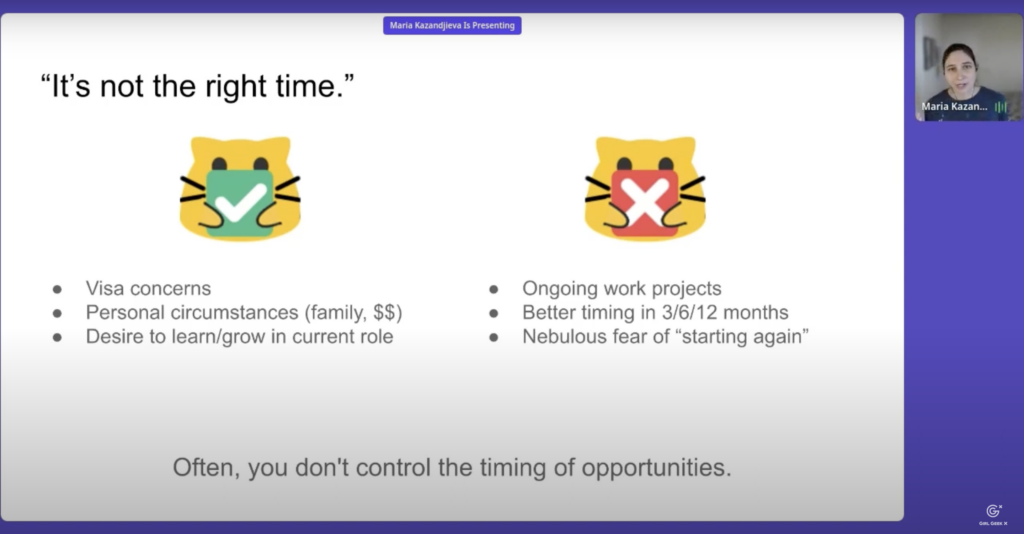
Maria Kazandjieva: Instead of, instead of telling yourself it’s not the right time, admit to yourself, “Man, I’m gonna miss some things about this gig if I take this new gig, right?” It’s okay. The other thing that I thought through when I was telling myself it’s not the right time was actually digging deeper and investigating some of the things that were good reasons not to take a new job, versus questionable reasons not to take a new job. I had considered a couple startups during my time at Netflix, and to me, there were just legit reasons why I chose not to take these other opportunities. At one point, I had kind of immigration and visa concerns, very practical and, you know, unpleasant thing to deal with. Personal circumstances, there were times with like the, the money situation was just, I was in a place where it was important for me to have that stable Netflix job. I also had desire to learn and grow in the current role and company that I was at. For example, when I transitioned from an engineer to a manager, I really wanted to learn about people leadership at a place like Netflix because I thought there was a lot of good stuff to learn there.
Maria Kazandjieva: There were other things that I was telling myself that were not good reasons. They were basically thought-terminating clichés. “Oh, I have ongoing work projects”. Well, ugh, guess what? There’s always ongoing projects. Or I would be like, “Well, the timing’s gonna be better in three months or six months or 12 months.” Maybe, but you can’t predict the future. And if you always tell yourself that the timing is going to be better in 12 months, chances are you are going to look back and regret not taking some chances in your career and, and not doing something new. And you’ll look back and be like, “Damn, I didn’t think I was gonna be doing this for 10 years. What was I doing?” Right? If you find yourself thinking these things, it’s not the right time. It’s better timing. Three, six months.
Maria Kazandjieva: Force yourself to just analyze what that really means. And is the person valid? For example, I can’t leave now cuz I wanna learn from the people that I’m working with versus, well, there’s always ongoing projects, and at some point if I’m gonna leave, it’s not like everything will be neatly wrapped up, right? Instead of just thinking that top-level thought, force yourself, you know, we’re all critical thinkers, we’re all tech people. Force yourself to think through the, the real reasons that are maybe preventing you from taking, taking a new role.
Maria Kazandjieva: Now onto the second one, oh, and I’m sorry, I wanted to say often you don’t control the timing of opportunities, right? Which is why it’s really important not to say it’s not the right time, because some opportunities you can seek out, but other opportunities, like the one that I took, it was my friend who had started thinking about the startup, right? I didn’t control when he was going to reach out to me, and if I just brushed it off as it’s not the right time, then when is the right time If you don’t really control it, right? So startups, gosh, everybody told me they’re really risky. Let’s talk about the, “it’s risky” thought-terminating clichés. I think it’s a clichés because basically everything is risky cuz you can’t fully predict the future. And I think if you say to yourself it’s risky without truly evaluating the risks, then what you’re saying is, I wanna take this leap, but I might fall, but you haven’t really analyzed what the fall is gonna look like. Maybe you’re gonna be like the cat, right? It gets dropped from some height. Don’t do this with your cats! But maybe you’re like the cat, and you’re actually gonna land on your feet, and perhaps land on one of those beautiful trails that I showed you earlier. The moment you think it’s risky, say to yourself, “Okay, yes, it could be risky, but like, what does that mean?” Right?
Maria Kazandjieva: List the risks, specific risks. Evaluate the specific risks when you’re evaluating them. Evaluate the new unknown opportunity that seems risky, but also evaluate some of the risks in your current role, because then you’re making a fairer comparison. And lastly, if you’re interested in taking a new job and you’re worried about the risks, try to imagine what the “ideal opportunity” would look like that has the right benefits versus risk ratio, right? Because you might always say something’s risky, but then you might as well admit that you’re never gonna do XYZ. Like a startup is always going to be risky, right? Leaving a stable job is always going to be risky, but admittedly, there’s some benefits to it. Think through how much risk in an ideal case would I take? And is this opportunity very close to this ideal case?
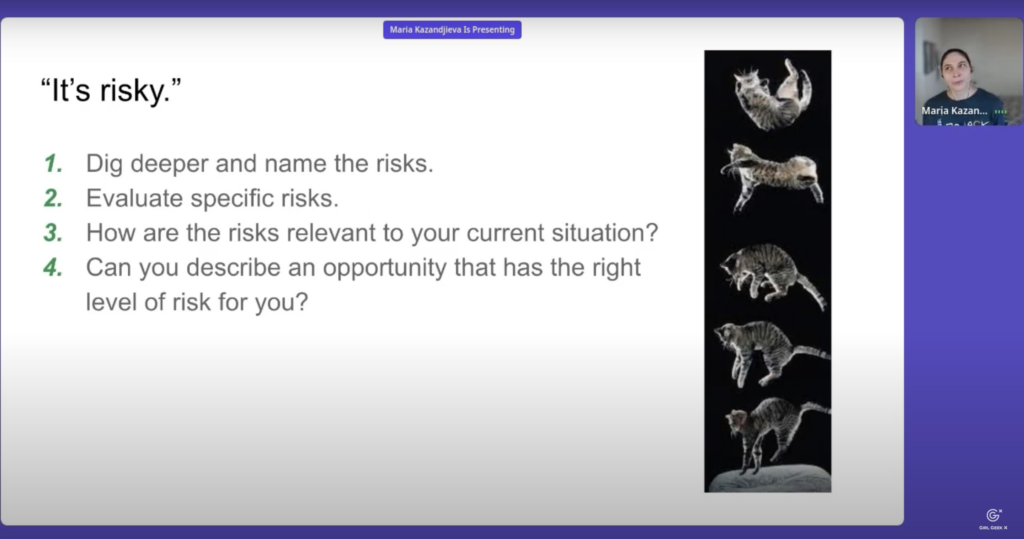
Maria Kazandjieva: Let me give you a couple of examples, right? Graft, our startup, we’re a machine learning startup. What are some of the specific risks that I listed for myself? It’s a startup. We may not succeed, right? Pretty obvious one. I’m not really sure my, what my job will be like cuz I’ll be on a small team building the team. I’m not a machine learning expert, so I gotta learn a bunch of stuff. I’ll be making less money for a while. I think that’s like a taboo one that people don’t talk about sometimes. But I think it’s okay to think about the practicalities of changing jobs and what that means for your lifestyle, and your needs because, you know, we all need money to pay the rent and feed the cats, right? I thought about some of these specific risks and I evaluated them for myself.
Maria Kazandjieva: Well, startup may not succeed, but if I wanna do a startup, I’m in the best position to help it succeed. <Laugh> Who else is gonna do it, if not me, right? I’m not sure what my job will be exactly. I mean, you’re never sure what happens at your job. Perhaps when you’re at a startup, you actually have a bit more control, right? I’ll make less money for a while. I did a calculated analysis of that and I was like, now’s a good time to try this thing, even if I have to take a salary cut for a while. The other thing that I did is, I also thought about my current job at the time at Netflix, and how do these risks about the new gig compare to potential risks at my current gig? Unfortunately, we’ve seen a lot of companies doing layoffs. It’s really, it’s really rough and honestly, my heart goes to anybody who’s going through this. But the truth is that what we’ve seen, especially in the last year or so, is that even at a larger company, at a more stable job, there are risks to job security, maybe not as big as a startup, but they exist and shouldn’t be ignored. Reorgs happen. Projects get abandoned, stuff like that. And so even though your current job might be amazing, you don’t fully control what your job will look like and what you’ll be working on, so there’s a little bit of uncertainty even in your current job. And on the money front, you know what, companies stock may go down, we’ll just leave it at that, and and hope that the market does better in the coming year.
Maria Kazandjieva: But the point here is if I only evaluated the risks of the new opportunity, this startup opportunity, and I didn’t compare them to the current opportunity with like specific bullet points, I might have been tricked into thinking that the new thing is way more riskier than the current thing when in reality, there’s a lot of similarities between the two. And as I said, I asked myself, what would my ideal next opportunity look like in terms of risks versus benefits? And I knew that I wanted to try a smaller company at some point. And I was like, well, if I wanna try a small company, some of these risks are inevitable. How can I mitigate them? And the examples in this case were, I know a couple of the people who are thinking of banding up and doing this startup together. I also know that it’s an area of work that I’m interested in, and I know that the timing is good. It feels like a pretty ideal situation to pursue, an ideal trail to pursue, given that I can’t fully predict how many uphills there is going to be, right?
Maria Kazandjieva: Now, last but not least, and I’ll treat you to one more AI-generated picture, which I quite like. The last thought-terminating clichés, and I’m going to speak about myself. Maybe nobody else thinks this, but I absolutely thought to myself, “I can’t do it. I’m not ready. What if I fail?” I wish we were in a room together so I could get some hands raised and, and maybe somebody else has felt this way when considering a new job. If you have maybe put it in the chat to make me feel better, but it’s a real thing. And here’s the thing, again, speaking for myself, maybe everybody else is better than me. Two things. You’re your harshest critic. I am my harshest critic. I am going to think this stuff. And if I get wrapped up into thinking that I risk of being the cat in the box on the floor, where if I only focus on thinking that I can’t do it and I’m not ready, I’m not putting my paw outside of that box, right? And second, I think to tell people not to doubt themselves and not to have those thoughts is not productive because it’s not real.
Maria Kazandjieva: I like to think that I’ve had a pretty successful career. I’d like to think that I’m pretty technically adept. I I like working in tech and I have those thoughts, so I have to imagine other people have them. And you can’t prevent the thought. But if you can’t prevent the thought, I think you should actually engage with it and talk to it. And I told you earlier that I’ll be very honest and genuine. I’m gonna show you the kind of sort of ridiculous questions that I asked myself as a follow-up to this thought, in order to get myself out of though-terminating clichés, and into real, internal investigation of what’s going on inside my head. All right?
Maria Kazandjieva: “Am I so special?” “Yes, but am I so special that I’m the only person who’s going to take a new job or do a startup and be worse than anyone has ever been to where it’s going to be absolutely catastrophic?” Well, when I ask myself the question that way, I was like, “Hell no. I’m not that special, right?” Everybody’s good at something. “Am I going to make mistakes and fail?” Absolutely guaranteed. “Am I going to <laugh> mistakes I’ve made in the past and have I already made mistakes and failed at things?” You better believe it, right? Again, if you’ve never made a mistake, put it in the chat and I will clap for you and support you. But the reality is that I’ve made mistakes. I’ve learned things as an engineering manager, as an engineer. And so I know that there’s things I can do. And then there’s also things that I can learn. And asking these a little bit ridiculous questions really helped crystallize that for me. Okay, we’ve established that I’ve made mistakes in the past. Am I still around kicking ass, having a job, helping people collaborating? Yes. Yes I am. And I think fundamentally that is the question that brings it all together. When I think to myself, oh my gosh, what if I can do it?
Maria Kazandjieva: “What if I fail?” I actually try to get a perspective of the things that I’ve done in my career, the chances that I’ve taken the mistakes that I’ve made, and remind myself that it’s okay, we’ll make mistakes, but, but we can do it. We might not be a hundred percent ready, but we can take that next adventure and, and learn more. And at the end of the day, my gosh, it’s International Women’s Day. If we don’t do it, who will do it? Why shouldn’t it be us? And I think that question, me saying it to you feels like an inspirational thing to say. But what I challenge you to do is actually after the talk, or later tonight when you’re brushing your teeth, ask yourself that question. Ask yourself, why shouldn’t it be me doing it? And I think that’s more of a thought-provoking question instead of a thought-terminating cliché.

Maria Kazandjieva: Because your brain will be like, oh yeah, that’s a good point. Why shouldn’t I do it? And I really hope that that fuels you if you’re having one of these stressful discussions. And so just to wrap up and you know, this is recorded so you can go back to this. Just wanted to compare and contrast these two things. Don’t stop your decision-making process so early on with generalities. Focus on what are the things to consider when making a career choice. Make it a rational process. And then if the time is right, lean into it. Even if it feels a little bit risky.
Maria Kazandjieva: My hope is that after this talk, you’re gonna feel less like this cat in the little box. It’s a fun trick to do with your cats if you have one. And instead, you’ll feel free to explore a new opportunity to take a chance to learn more and to honestly continue kicking ass in tech. Thank you so much for having me today, and I hope everyone has a wonderful International Women’s Day.
Angie Chang: Thank you so much, Maria. That was an excellent talk on encouraging us to ask ourselves to hard questions and say, “Why not me?” Thank you so much.
Like what you see here? Our mission-aligned Girl Geek X partners are hiring!
- Check out open jobs at our trusted partner companies.
- Watch all ELEVATE 2023 conference video replays!
- Does your company want to sponsor a Girl Geek Dinner? Talk to us!


